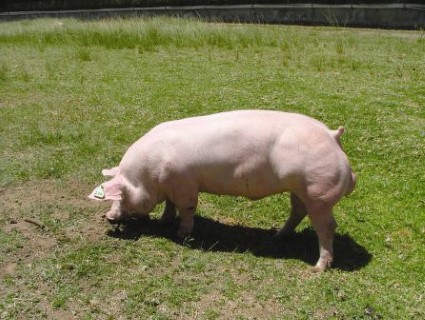The Belgian
Landrace is a muscular white swine with heavy droopy ears. They are known as
the butchers pig, primarily because they are the most commonly used breed for
the consumer market. The Belgian Landrace can be described as a very practical
type of pig with good fertility, sound body mechanics, and good maternal
instincts, and plenty of milk for their piglets.
The Belgian
Landrace has met the demands of producing top quality pork for the consumer
marketplace. The breed has also sparked interest from other countries with
similar goals in crossbred swine production.
The Belgian
Landrace breeds development began in the late 1920s, with the native Landrace
type, which sought to improve their short, fat, and poorly muscled traits. In
the early 1930s, the German Landrace was introduced and crossed with the
native stock. The German stock that was introduced was said to have had an
infusion of British Large White. About a decade later, the Dutch Landrace breed
was imported and crossed with the Belgian Landrace to boost their fertility,
constitutions, stature, and to speed up growth.
Producing a high
quality, fresh, lean meat, with minimum fat cover, is the number one goal in
Belgium. Most pork is marketed to consumers as fresh pork, rather than as cured
or processed. Overall, Belgium continues to test their swine and monitor
production very carefully while striving to improve quality. This breed is an
excellent example of selective breeding and crossbreeding that consistently produced
top quality pork.
